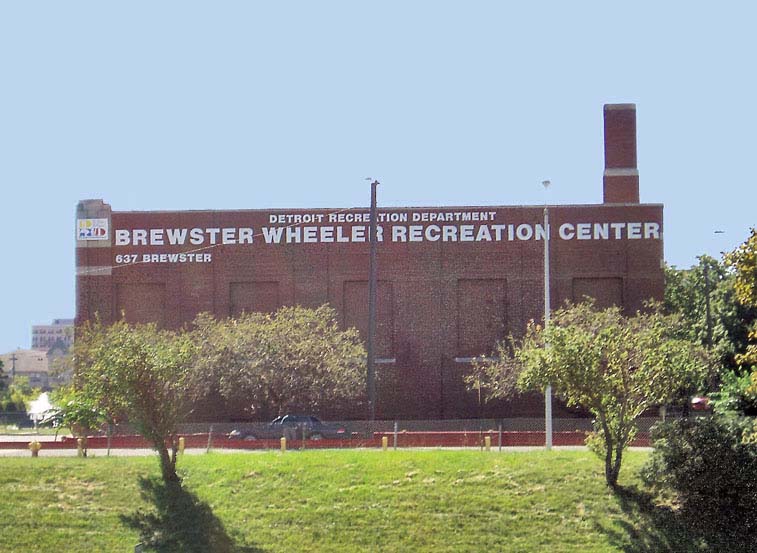

When blacks moved to northern cities in great numbers during World War I, a small cadre of highly educated and prosperous African-Americans in these places realized that Jim Crow, with its pernicious consequences, was rapidly spreading throughout the North. The small cadre of established and middle class blacks litigated for civil rights and won a few victories in the North as they sought to preserve the rights that the Radical Republicans thought they had protected in the Civil Rights Act of 1866, the Fourteenth Amendment and several subsequent civil rights bills of the Reconstruction era. However, they lost the battle to keep Jim Crow at latitudes below the Mason-Dixon Line. By 1920, racial segregation became the norm in Detroit, Chicago and Cleveland, just as it was in Atlanta, Birmingham and Memphis with several important exceptions. Jim Crow was not imposed by law in the North, and in every northern city, African-Americans were as free as whites to exercise their franchise, a power that quickly led to some modest benefits for African Americans in terms of municipal and school employment.
In the era when Detroit became a thoroughly racially segregated metropolis, the city—in 1919—hired Leon “Toy” Wheeler of Indianapolis as their first black recreation worker. As the African American population grew, a need arose for a recreational center for black youth. One opportunity would have been to racially integrate the city’s large and prosperous YMCA in downtown Detroit. That was not viewed as a conceivable option, so the city developed a racially segregated system for youth recreation.
In 1926, the city purchased property at the intersection Vernon Highway and Hastings Street—the major black ghetto at that time—and erected the Art Deco building that you see in the picture above. Substantial funds were invested to create a marvelous facility with space for basketball, swimming, the indoor sports including boxing and the outdoor sports—tennis and baseball. “Toy” Wheeler was the first supervisor of this attractive facility. The basic building that you see is a two-story, flat-roofed rectangular red-brick functional but attractive building. To one side, you see the addition of a gymnasium. On the other side, there is a one-story hipped roofed addition with attractive arched windows.
The building you see has a longer history. The Detroit Public Library, in 1915, commissioned Detroit architects, Mildner and Eisen to design a branch library for this site. The building was completed and known as the Ginsberg Branch Library. By 1929 it had been renovated and converted into what is now known as the Wheeler Center. George W. Graves was the architect for the conversion of the school into a recreation center.
The building has historical significance since, early in his career, Joe Louis fought here. The outside basketball court was the scene of a Harlem Globetrotters game in 1932.
This was originally named the Brewster Center but was renamed for its long time manager, Leon Wheeler. Demographic changes often lead to a switch in the purposes for which a building is used. Note the several former synagogues and Catholic churches that now are homes for African American Protestant congregations. Just so, as Detroit’s population grew older; the recreational facilities at the Wheeler Center came to serve the elderly as much as the youth of this African-American community.
With Detroit's financial termoil and the closing of the high rise nearby Brewster Homes, the recreational center was closed for good in 2006. At one point early in Mayor Duggan's term of office, plans were put forth to raze the structure. Mayor Duggan blocked those plans. By 2015, an economic revival of downtown and Midtown Detroit was on the horizon and abandoned properties suddenly had unexpected financial worth. In April, 2015; Mayor Duggan announced that investors would take over the site and invest at least $36 milloion in it. Apparently the Wheeler Recreation Center will be converted into an upscale restaurant while 100 to 150 residential units will be constructed. The developers made clear that they would recognize the historic significance of the building and would include murals about the accomplishments of Joe Louis.
Architect for the original Ginsberg Branch Library: Richard Mildner and Adolph Eisen
Architect for the recreation center: George W. Groves
Architectural Style: You could call it Art Deco.
Date of opening of the branch library: 1915.
Date of opening: 1929
Use in 2016: A renovation is planned with an expected completion date of 2017 or 2018.
City of Detroit Local Historic District: Not listed
State of Michigan Registry of Historic Sites: #L0441; Listed March 2, 1976.
State of Michigan Historical Marker Erected: August 24, 1978.
National Register of Historic Places: Not Listed
Photograph: September, 2004; Ren Farley
Description updated: November, 2016
Return to Racial History in Detroit